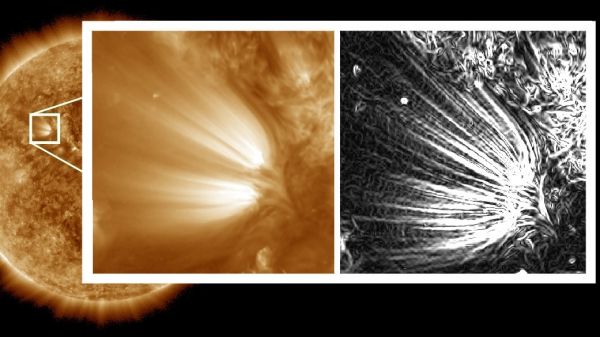Scientists have combined NASA data and cutting-edge image processing to gain new insight into the solar structures that create the Sun’s flow of high-speed solar wind, detailed in new research published today in The Astrophysical Journal. This first look at relatively small features, dubbed “plumelets,” could help scientists understand how and why disturbances form in the solar wind.
The Sun’s magnetic influence stretches billions of miles, far past the orbit of Pluto and the planets, defined by a driving force: the solar wind. This constant outflow of solar material carries the Sun’s magnetic field out into space, where it shapes the environments around Earth, other worlds, and in the reaches of deep space. Changes in the solar wind can create space weather effects that influence not only the planets, but also human and robotic explorers throughout the solar system — and this work suggests that relatively small, previously-unexplored features close to the Sun’s surface could play a crucial role in the solar wind’s characteristics.
“This shows the importance of small-scale structures and processes on the Sun for understanding the large-scale solar wind and space weather system,” said Vadim Uritsky, a solar scientist at the Catholic University of America and NASA’s Goddard Space Flight Center, who led the study.
Read more at NASA / Goddard Space Flight Center
Image: Scientists used image processing on high-resolution images of the Sun to reveal distinct “plumelets” within structures on the Sun called solar plumes. The full-disk Sun and the left side of the inset image were captured by NASA’s Solar Dynamics Observatory in a wavelength of extreme ultraviolet light and processed to reduce noise. The right side of the inset has been further processed to enhance small features in the images, revealing the edges of the plumelets in clear detail. These plumelets could help scientists understand how and why disturbances in the solar wind form.
Credits: NASA/SDO/Uritsky, et al


